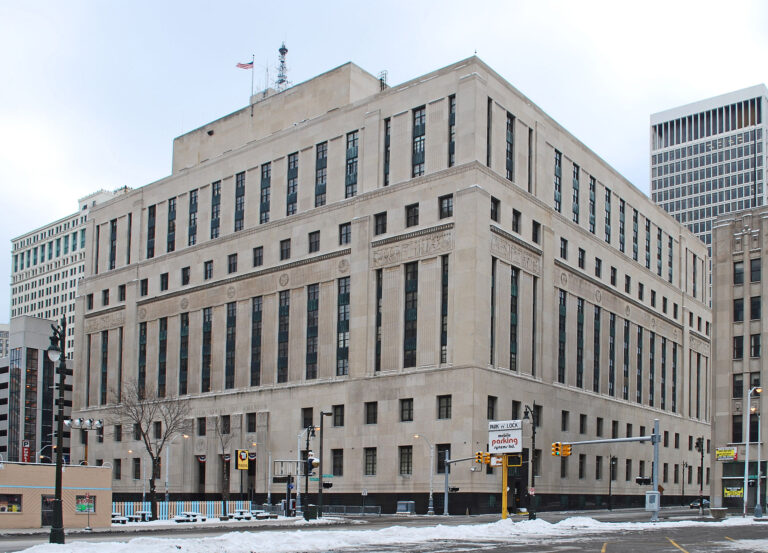The latest procedural hurdle for plaintiffs in O’Connor v. Uber might be the toughest one to clear yet. On Thursday, U.S. District Judge Edward Chen heard arguments on whether (and when) he should certify a class in the case (previously discussed by OnLabor here and here). Wired examines the question of class certification in further depth, providing not only a detailed play-by-play of the hearing, but also reminding readers of some relevant trivia: Uber is represented by Gibson Dunn partner Ted Boutrous, who in addition to litigating the Vergara teacher tenure suit, also served as lead counsel in Wal-Mart v. Dukes. That 2011 Supreme Court case has been widely interpreted by both courts and commentators as making it harder to certify a class.
In addition to arguing that “there is no such thing as a typical Uber driver,” Boutros also submitted declarations from 400 drivers indicating that they preferred to be classified as independent contractors. As reported by The Recorder and others, however, Judge Chen appeared skeptical, nothing that “400 declarations sounds ‘impressive, except when you measure that against 160,000 class members, that measures out to 0.25 percent, not even that.'” Moreover, plaintiffs’ attorney Shannon Liss-Riordan argued that this case is not a “popularity contest,” and noted that such “happy camper” declarations are common in employment cases. Regardless of what Judge Chen ultimately decides on the issue of class certification (and the case as a whole), even he recognizes that he will not have the last word on the matter: “The chances are a higher court will have a look at whatever I do,” he acknowledged. And, in any event, should class certification be denied, Liss-Riordan promised to file individual suits on behalf of each of the hundreds drivers who have contacted her firm.
Writers at Vice have become the latest group of online journalists to unionize. As reported by the New York Times and other sources, a portion of the digital media outlet’s 700 or so employees have agreed to join the Writers Guild of America, East, the same union that writers at Gawker and Salon had previously voted to join. The Times notes that these “moves are seen by some as a sign of maturity in a previously anarchic sector, defined by its start-up sensibility and employees’ youth,” and that “other major digital media companies might [soon] follow suit.” For its part, Vice executives appear to have indicated that they are “willing to engage in the process.”
Earlier this week, David Macaray posted his take on the Michigan Supreme Court’s recent decision to uphold the state’s “right-to-work” law. Writing in the Huffington Post, Macaray asks: “You hate unions? Fine. Then don’t work in a union shop. Believe me, you won’t have any problem finding a non-union job because the overwhelming majority—the staggering majority—of American businesses are non-union.” He goes on take on union “free riders,” suggesting that those non–union supporters who nonetheless choose to work union shops because “union jobs provide better wages, benefits and working conditions than non-union jobs” should then “pay [their] fair share of the freight.” Macaray concludes by rebutting some of the common arguments raised by union opponents, arguing that “remaining an independent” (internal quotation marked omitted) is not “some sort of noble, highfalutin gesture,” nor is “being . . . small-minded, vindictive or greedy . . . the same thing as fighting for one’s rights under the First Amendment.”
The Daily Beast takes a lengthy and critical look at 1199SEIU, which, with over 300,000 members, is the largest local union in the country. Suggesting that the union “enjoys a reputation as New York’s most formidable organized interest,” the article contends that 1199 exerts its influence through “the sheer size of its membership, its spending on campaigns and lobbying, and the depth and breadth of its connections with New York’s ruling elite.” Although the union most frequently engages in the health-care policy debate, it has also “branched out to support other ‘progressive’ causes, including tax increases, gay rights, climate change, and an expansive immigration policy,” and “has helped underwrite ‘living wage’ campaigns, including the ‘Fight for $15’ fast-food workers’ movement, and lent support to the recent antipolice protests in New York City and elsewhere.” Nevertheless, the article calls for 1199’s “power . . . to be checked,” suggesting that “progressivism won’t always be ascendant” and that “New York City . . . has traditionally thrived when some right-leaning force has imbued its inherent liberalism with sanity.”
There may be some potential downsides to raising the minimum wage, cautions Lydia DePillis of the Washington Post. She cites a recent Bloomberg News report noting that in the wake of Walmart’s implementation of a $9 minimum wage, “[e]mployees who have been there for years are complaining it’s unfair that they now make not much more than someone who’s just been hired off the street.” She also references the internal dissension apparently growing at Seattle-based Gravity Payments after the company’s much-ballyhooed announcement that it would institute a $70,000 minimum annual salary for all employees. Why might raising the wages of some workers cause malcontent in other workers? DePillis suggests that “while it might not be an economically rational decision to leave a job just because someone below you is all of a sudden making nearly as much, humans aren’t always perfectly rational beings.” And in fact, “[p]rosperity relative to one’s neighbor tends to be a more important determinant of happiness than the actual number on their paycheck.” Of course, the obvious answer seems to be simply to “move the whole payscale up a bit,” but DePillis surmises that “the differential between those two classes of worker likely won’t be as large” and thus the tension is likely to persist.






Daily News & Commentary
Start your day with our roundup of the latest labor developments. See all
December 11
In today’s News and Commentary, Biden’s NLRB pick heads to Senate vote, DOL settles a farmworker lawsuit, and a federal judge blocks Albertsons-Kroger merger. Democrats have moved to expedite re-confirmation proceedings for NLRB Chair Lauren McFerran, which would grant her another five years on the Board. If the Democrats succeed in finding 50 Senate votes […]
December 10
In today’s News and Commentary, advocacy groups lay out demands for Lori Chavez-DeRemer at DOL, a German union leader calls for ending the country’s debt brake, Teamsters give Amazon a deadline to agree to bargaining dates, and graduates of coding bootcamps face a labor market reshaped by the rise of AI. Worker advocacy groups have […]
December 9
Teamsters file charges against Costco; a sanitation contractor is fined child labor law violations, and workers give VW an ultimatum ahead of the latest negotiation attempts
December 8
Massachusetts rideshare drivers prepare to unionize; Starbucks and Nestlé supply chains use child labor, report says.
December 6
In today’s news and commentary, DOL attempts to abolish subminimum wage for workers with disabilities, AFGE reaches remote work agreement with SSA, and George Washington University resident doctors vote to strike. This week, the Department of Labor proposed a rule to abolish the Fair Labor Standards Act’s Section 14(c) program, which allows employers to pay […]
December 4
South Korea’s largest labor union began a general strike calling for the President’s removal, a Wisconsin judge reinstated bargaining rights for the state’s public sector workers, and the NLRB issued another ruling against Starbucks for anti-union practices.